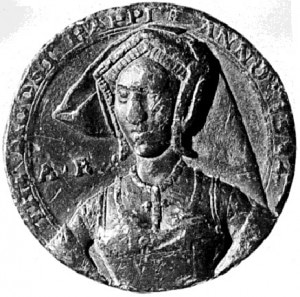
He gave me the following statement and gave me permission to share it here:
Recent findings of the FACES (Faces, Art, and Computerized Evaluation Systems) research project at the University of California, Riverside, have been misinterpreted by the press. While the FACES team did find certain associations and lack of associations between a number of famous portraits (in particular, problematic groups of portraits sometimes said to be of Anne Boleyn and of William Shakespeare), a forthcoming publication by the FACES team will state that the overall results of our work on these particular groups of portraits is inconclusive. As a matter of principle, we are insistent that this technology does not prove the identity of its subjects. It merely provides new categories of evidence for researchers to use in coming to their own conclusions. And it is the decided position of the FACES team that research on these groups of portraits is incomplete.
Thank you so much to Professor Rudolph for helping me with this.